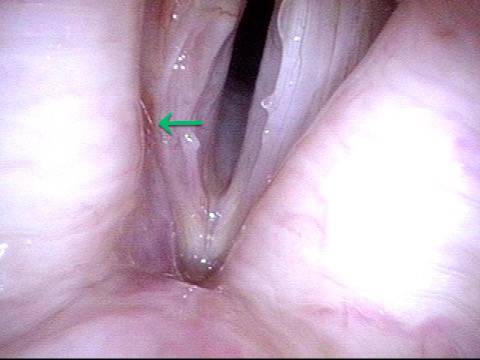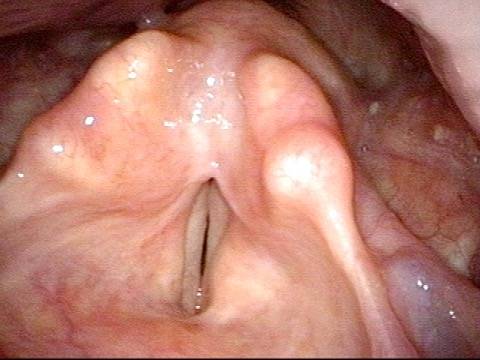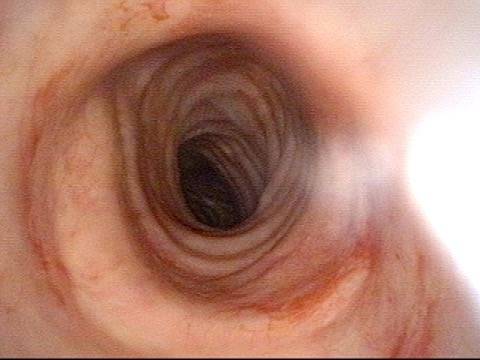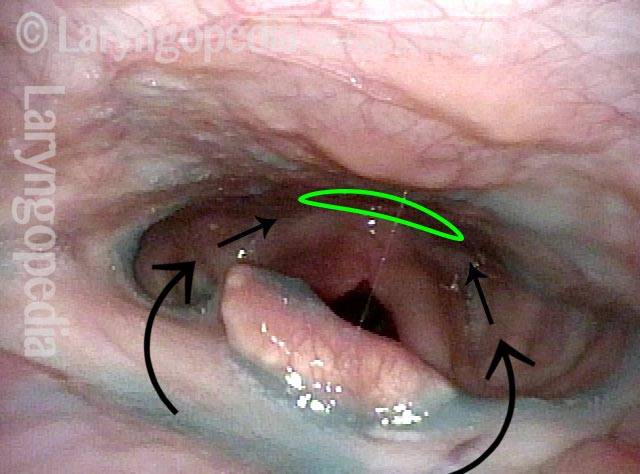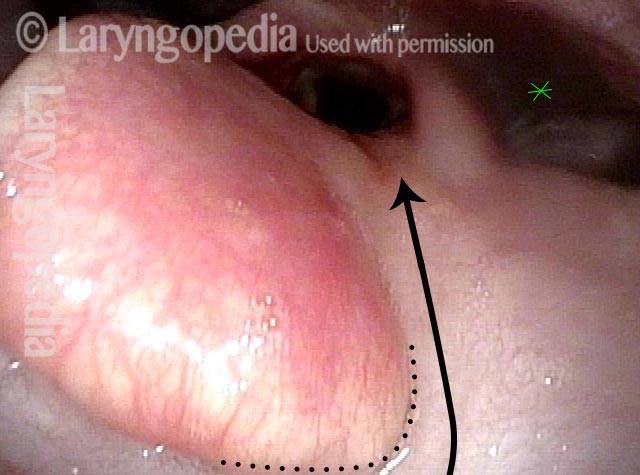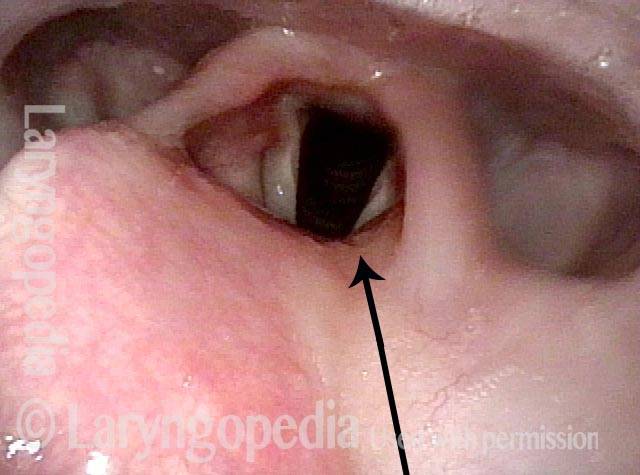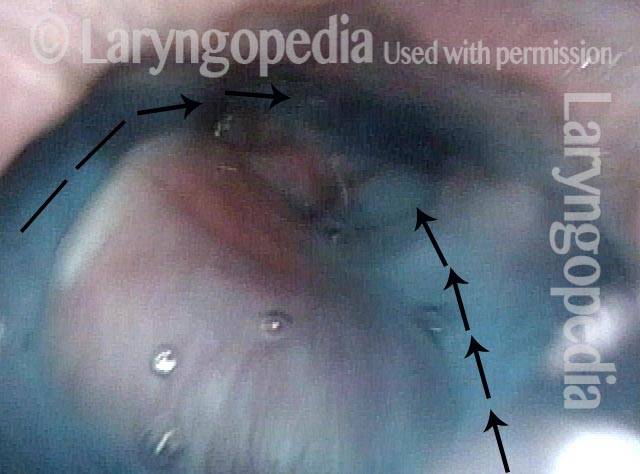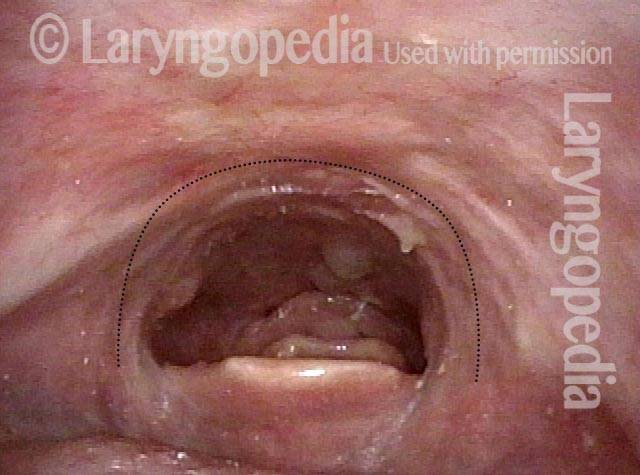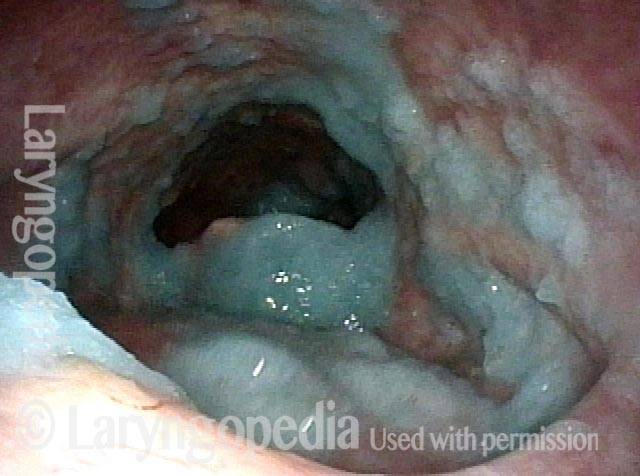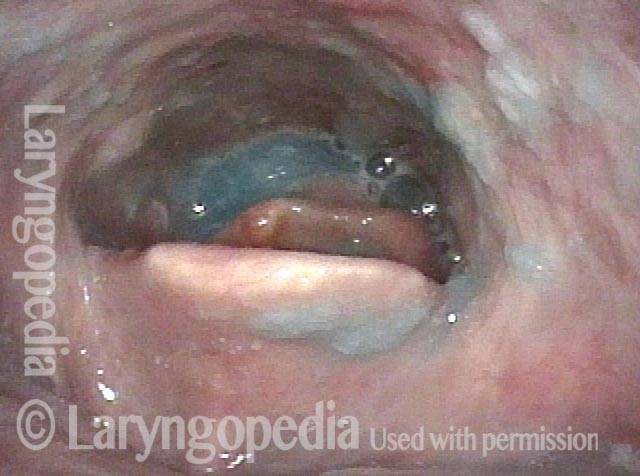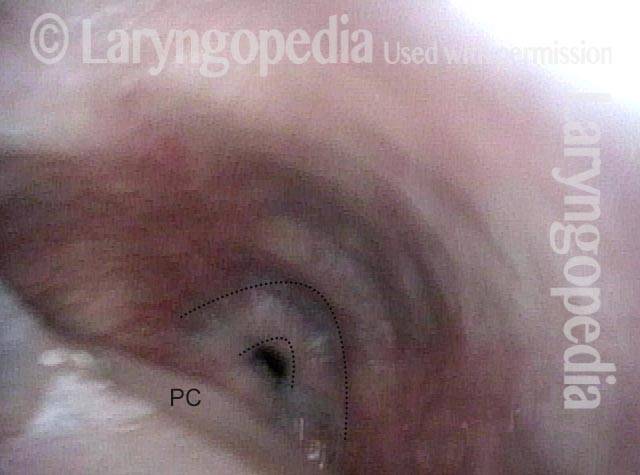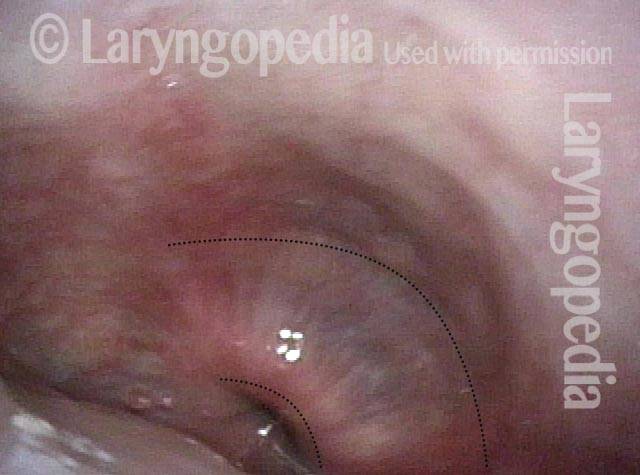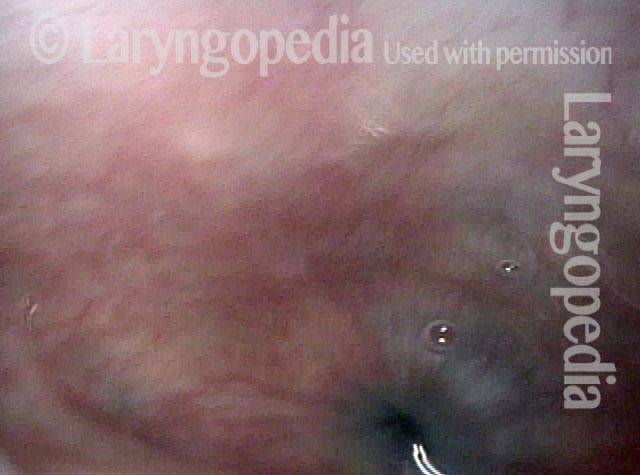Scarring refers to fibrous tissue that remains after healing of an injury. In laryngology—leaving trauma out of the picture—scarring is most often seen in the context of surgery, radiation, or prolonged use of an endotracheal tube. If a wound is created, such as after removing a superficial vocal cord cancer, the tissue that results after complete healing is not as flexible as normal tissue would be; the scarred area typically does not vibrate well, or at all. Sometimes progressive fibrosis occurs after radiotherapy. It is thought that the reduced blood supply and lowered tissue oxygen level caused by radiation damage to microvasculature leads to the gradual replacement of tissue with fibroblasts, because they can tolerate lower tissue oxygen levels.
Tube Injury—A Rare Complication of Intubation for General Anesthesia
Inflamed vocal cord (1 of 5)
Inflamed vocal cord (1 of 5)
Closer view (2 of 5)
Closer view (2 of 5)
Scarring from intubation tube (3 of 5)
Scarring from intubation tube (3 of 5)
Mucosal Injury (4 of 5)
Mucosal Injury (4 of 5)
Flaccidity of right vocal cord (5 of 5)
Flaccidity of right vocal cord (5 of 5)
Conclusion: While we try to explain abnormality due to one cause, here, the patient has a mucosal injury and paresis of right TA and LCA muscles, which can also follow intubation. This explains why the initial postop voice was so weak and whispery, and also the rapid partial improvement. This voice will likely continue to improve and be very functional as a speaking voice. Fortunately, this person is not a singer, as clarity especially in upper notes, will likely be remain impaired even after full recovery.




